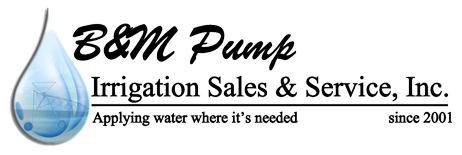Tips for Cotton Irrigation Management
Irrigation is critical to the success of cotton growth (or the growth of any crop). There are several types of cotton irrigation systems that may be used to deliver irrigation water. These include:
- Surface irrigation systems: Systems in which water is applied down from siphon tubes or piping and flooding irrigation basins.
- Sprinkler systems: Systems in which center pivots sprinkle water on the crops.
- Drip irrigation: Surface or subsurface systems that provide different styles of irrigation on a slow drip basis.
Subsurface drip irrigation has become the most popular method of irrigating cotton crops in recent years due to how economical it is. The system is also financially advantageous in that it has an increased life expectancy over other types of systems, and there is less labor associated with maintaining the system.
This type of irrigation system is also permanent, in that the lines remain in place all year round. This requires some careful design and installation to ensure they operate efficiently and are not damaged by the changing of the seasons. Not every site will necessarily be suitable for subsurface drip irrigation—there will need to be sufficient water supply and quality, as well as topography that is suitable for this type of irrigation.
Designing the system
There are a few considerations to keep in mind when designing a subsurface drip irrigation system.
- Water: Any SDI system will need to provide water at the required flow rate, with sufficient water to cover the entire growing system. The system may be used for irrigating more than one crop, so if that’s the case, make sure you have enough water to satisfy the needs of the most water-demanding crop. The amount of water needed for cotton growing will vary based on the climate of the region and the type of soil you’re dealing with.
- Water quality: Beyond water quantity and flow rate, you’ll also need to consider water quality, both for the system and for the cotton. If you’re in a humid area where there are not as many salts in the root zone, you will not need a leaching requirement. For the system, you need to consider the possibility of emitter clogging. High-quality water will help avoid this potential risk.
- Other considerations: There are some other considerations you’ll need to keep in mind when designing a subsurface drip irrigation system. How will the use of the area vary over time? Are you planning on sticking to cotton, or is there the possibility you will be rotating crops on that same plot of land? In addition, will the whole area be dedicated to a single crop, or will it be subdivided into smaller areas of different crops? It’s highly recommended that you work with an irrigation specialist to analyze your usage of the land before you determine the best type of system installation.
For more information about designing and installing cotton irrigation systems and tips for smart irrigation management, we encourage you to contact the team at B&M Pump Irrigation Sales & Service, Inc. with your questions.
Categorised in: Cotton, Irrigation
